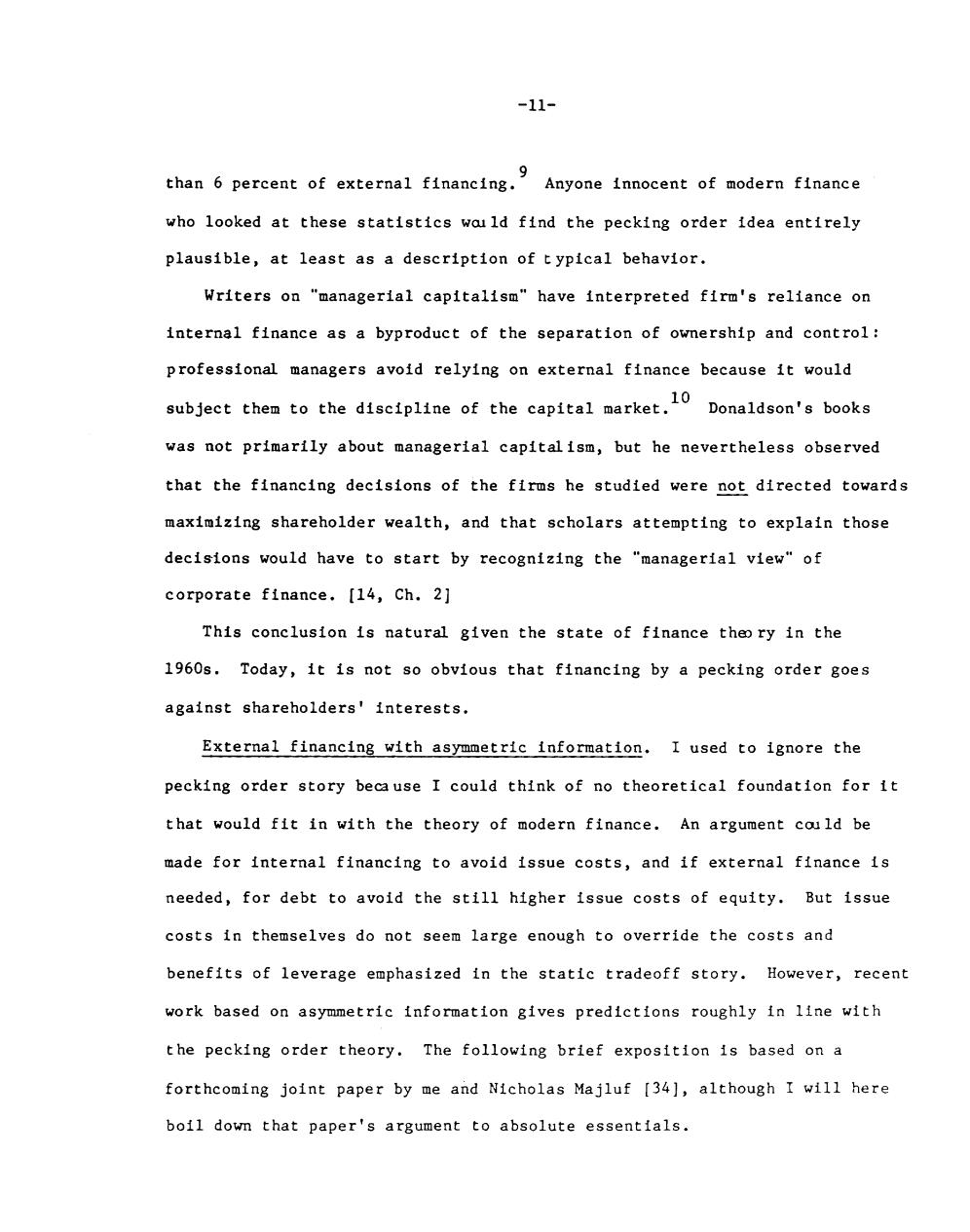正在加载图片...

-11- 9 than 6 percent of external financing.Anyone innocent of modern finance who looked at these statistics wald find the pecking order idea entirely plausible,at least as a description of t ypical behavior. Writers on "managerial capitalism"have interpreted firm's reliance on internal finance as a byproduct of the separation of ownership and control: professional managers avoid relying on external finance because it would subject them to the discipline of the capital market,10 Donaldson's books was not primarily about managerial capitalism,but he nevertheless observed that the financing decisions of the firms he studied were not directed towards maximizing shareholder wealth,and that scholars attempting to explain those decisions would have to start by recognizing the "managerial view"of corporate finance.[14,Ch.2] This conclusion is natural given the state of finance theo ry in the 1960s.Today,it is not so obvious that financing by a pecking order goes against shareholders'interests. External financing with asymmetric information.I used to ignore the pecking order story beca use I could think of no theoretical foundation for it that would fit in with the theory of modern finance.An argument could be made for internal financing to avoid issue costs,and if external finance is needed,for debt to avoid the still higher issue costs of equity.But issue costs in themselves do not seem large enough to override the costs and benefits of leverage emphasized in the static tradeoff story.However,recent work based on asymmetric information gives predictions roughly in line with the pecking order theory.The following brief exposition is based on a forthcoming joint paper by me and Nicholas Majluf [34],although I will here boil down that paper's argument to absolute essentials